
Irrigation Systems for Dry Climates: Water Smart Solutions
November 18, 2025
Find the Best Landscape Contractor Near Me Today in San Diego
December 2, 2025Did you know San Diego receives less than 12 inches of rain annually? Adopting sustainable landscaping practices is essential to ensure your yard thrives while conserving resources and protecting local ecosystems. San Diegans face the unique challenge of drought cycles and dry winters, but your yard doesn’t have to look barren or lifeless. The right landscaping ideas can make your outdoor space vibrant, resilient, and sustainable year-round. In this guide, you’ll discover how simple shifts in how you design, plant, and maintain your yard can protect it against dry winters while supporting the local environment.
San Diego’s Dry Winters: Why Sustainable Landscaping Practices Matter
Did you know San Diego receives less than 12 inches of rain annually? Adopting sustainable landscaping practices is essential to ensure your yard thrives while conserving resources and protecting local ecosystems.”
San Diego’s climate is as beautiful as it is challenging. With dry winters and very limited rainfall, sustainable landscaping practices are more than just a trend—they’re a necessity for yard and garden success in Southern California. Water shortages, soil erosion, and plant health issues can become major problems if your landscape isn’t adapted to local conditions. By implementing eco-friendly landscaping ideas, such as choosing drought-resistant native plants, opting for permeable hardscapes, and utilizing smart irrigation systems, property owners can maintain lush, attractive yards without straining precious natural resources.
Incorporating sustainable landscape design helps reduce water waste, saves money, and supports local wildlife by creating habitats for birds, bees, and butterflies. These sustainable site strategies are not just environmentally sound, but they also boost curb appeal and property value—giving you a yard that looks great and performs even better. Whether you’re planning a full landscape renovation or just want to prepare your yard for the next dry season, the right sustainable landscaping practice can make all the difference for your home and the broader San Diego ecosystem.
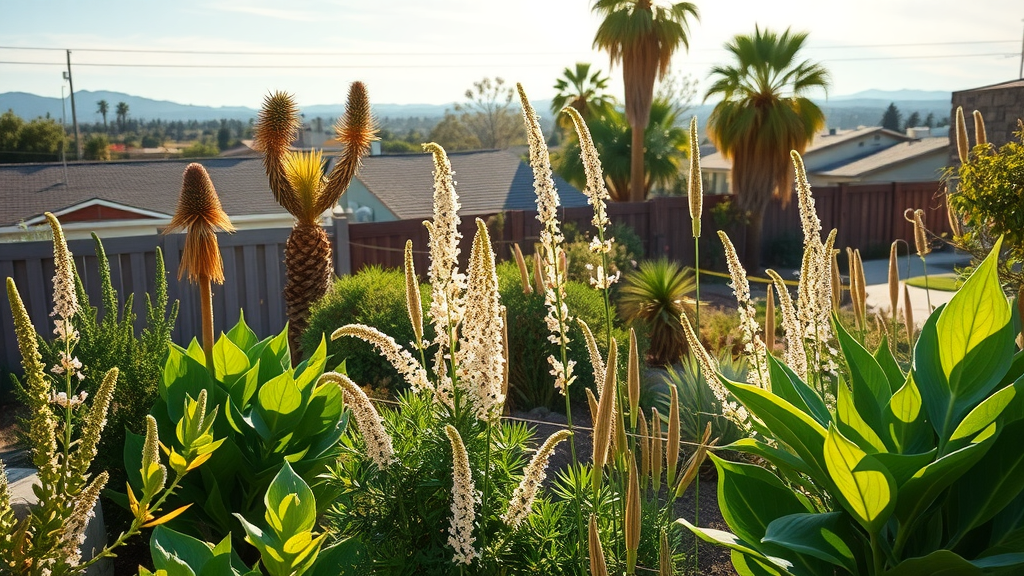
What You’ll Learn About Sustainable Landscaping Practices in San Diego
- Principles of sustainable landscaping and their application
- How to select native plants and ground cover for your yard
- Water conservation techniques, including rain gardens and smart irrigation
- Sustainable landscaping ideas for renovation and maintenance
- Environmental and economic benefits of a sustainable garden
Understanding Sustainable Landscaping Practices
What are Sustainable Landscaping Practices?
Sustainable landscaping practices are landscaping methods designed to preserve natural resources and minimize harmful impacts on the environment. In San Diego, this means working with the dry winter climate—choosing native plants, using organic materials like compost and mulch, conserving water, and creating healthy soils that support resilient plant growth year-round. A sustainable garden leverages landscape design principles like efficient plant selection, recycled materials, and eco-friendly irrigation to create an attractive, low-water landscape that thrives with minimal input.
Unlike traditional landscapes dependent on frequent watering, fertilizers, and pesticides, sustainable landscapes encourage biodiversity and reduce reliance on chemicals. They require minimal maintenance once established because native plants are adapted to local conditions. This not only helps conserve water but also reduces yard waste and maintenance costs. Integrating practices like rain gardens, green roofs, and cooperative extension resources empowers homeowners to play a part in protecting San Diego’s natural beauty for generations to come.
Key Benefits of a Sustainable Landscape in San Diego
A sustainable landscape offers numerous advantages beyond water savings. With San Diego’s ongoing water restrictions and climate shifts, property owners benefit from reduced utility bills and greater plant health. Sustainable landscaping ideas like mulching, composting, and installing efficient irrigation improve soil structure, prevent soil erosion, and foster beneficial soil microbes—all leading to stronger plants and healthier outdoor living spaces.
Additionally, sustainable gardens provide vital habitats for native pollinators and support biodiversity, which is essential for a balanced ecosystem. Following these sustainable practices also helps reduce runoff pollution—protecting the city’s watersheds and local environments. Over time, these landscapes prove more resilient to drought, disease, and pests, ensuring long-term curb appeal and value for your property.
| Category | Conventional Landscaping | Sustainable Landscaping |
|---|---|---|
| Water Use | High; frequent irrigation, turf lawns, non-native plants | Low; drought-tolerant native plants, drip irrigation, rain gardens |
| Plant Types | Non-native ornamentals, require heavy inputs | Native plants; adapted to local climate, requires minimal care |
| Maintenance | Regular mowing, pesticides, fertilizers, yard waste removal | Mulching, composting, low fertilizer needs, fewer chemicals |
| Environmental Impact | Soil erosion, water runoff, high chemical use | Soil health improvement, supports wildlife, reduces pollution |
San Diego-Focused Landscaping Ideas: Embracing a Sustainable Garden
Incorporating Native Plants and Native Plant Communities
Native plant selection is at the heart of sustainable landscaping practices in San Diego. Locally adapted native plants like California sagebrush, ceanothus, and manzanita thrive on low water and are naturally resistant to local pests and diseases. Planting in native plant communities—groupings that mimic the patterns and diversity found in wilderness areas—creates a dynamic, living landscape that supports local pollinators and birds.
Using native plants in your landscape design helps reduce your need for supplemental water, minimizes yard waste, and promotes greater biodiversity. These plant choices—often recommended by cooperative extension experts and local botanic gardens—are beautiful, resilient, and support the local ecosystem year-round. They require minimal fertilizer and pesticides, are more resistant to environmental stresses, and provide the foundation for a truly sustainable garden.
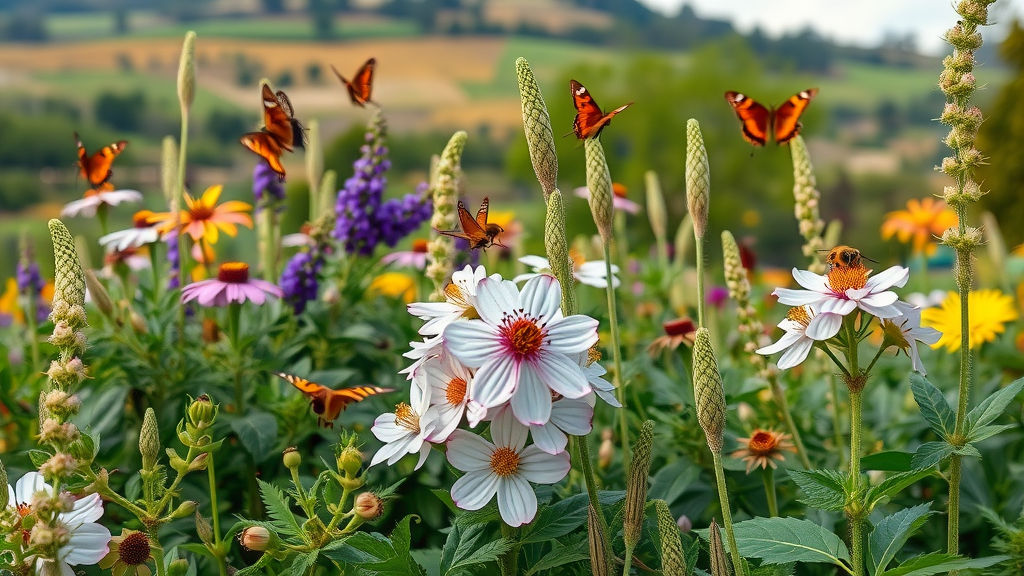
Ground Cover Options for a Sustainable Landscape
Ground cover is an essential component of sustainable landscape design. Rather than relying on thirsty turf grass, consider drought-tolerant alternatives like California fescue, creeping thyme, or sandstone sedge. These ground covers help conserve water by shading the soil and reducing evaporation, limit soil erosion, and add visual interest with their textures and colors.
Ground cover options for sustainable gardens also support beneficial insects, suppress weeds, and reduce the amount of yard waste produced. Many native plant ground covers are evergreen, ensuring year-round beauty and resilience. Their roots stabilize the soil, lower maintenance needs, and require minimal fertilization, contributing to a healthier, more sustainable landscape.
Edible and Pollinator-Friendly Gardens
Combining food-producing plants with pollinator habitat is both smart and sustainable. Raised beds with edibles like kale, herbs, and strawberries interspersed with native flowering plants attract pollinators and beneficial insects. This not only increases your garden’s productivity but also supports local ecosystems and encourages biodiversity.
Pollinator-friendly gardens feature native plants like milkweed, buckwheat, and monkeyflower, which provide nectar and habitat for bees and butterflies. Edible landscaping ideas for San Diego homes can be integrated with your sustainable site plan—making your yard not just beautiful, but highly functional and supportive of a healthy environment.
- Top drought-tolerant native plants for San Diego yards
- Sustainable landscaping ideas for small and large properties
Water Conservation Techniques in Sustainable Landscaping
How to Conserve Water in a Sustainable Garden
Given San Diego’s low rainfall, conserving water is central to any sustainable landscaping practice. Water next to the roots and utilize mulch around plants to prevent evaporation. Install drip irrigation systems to deliver water precisely where it’s needed, and schedule watering for early morning or dusk to reduce loss to evaporation.
Water-wise landscape design includes capturing rainwater with barrels or cisterns and redirecting runoff to rain gardens or permeable surfaces. These methods not only conserve water but also help replenish groundwater and prevent soil erosion. Efficient irrigation, along with drought-tolerant native plants, greatly reduces overall water demand and helps you adapt your landscape to dry winters.
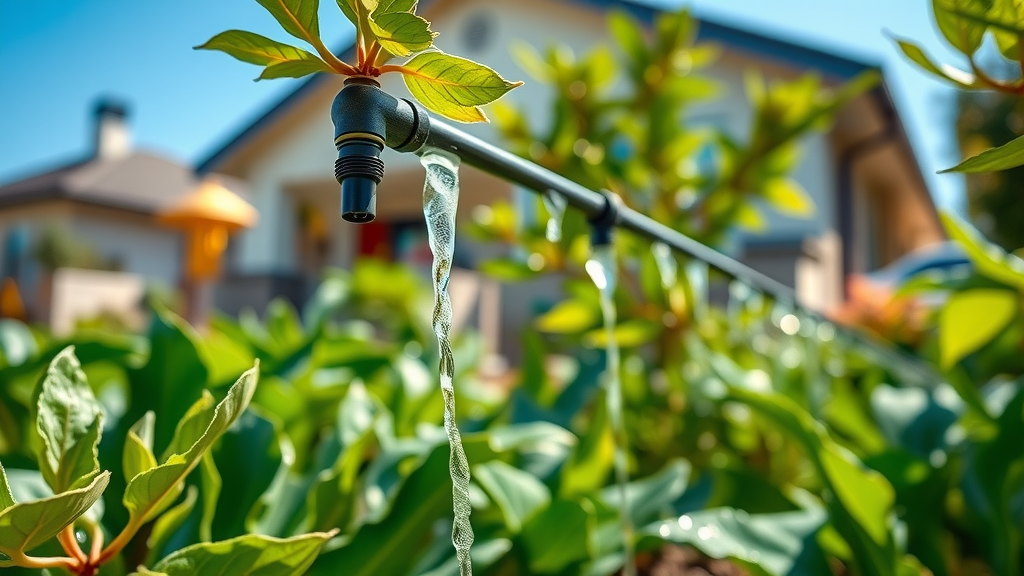
The Role of Rain Gardens
Rain gardens are shallow, planted basins designed to collect and filter rainfall runoff from impermeable surfaces like rooftops and patios. In San Diego’s dry winters punctuated by the occasional heavy rain, rain gardens help reduce flooding and soil erosion while replenishing local aquifers. They’re typically planted with deep-rooted native plants that tolerate both dry and wet conditions.
Installing a rain garden as part of your sustainable landscape captures and slows stormwater, prevents pollution, and supports biodiversity. Rain gardens also create visual interest and attract pollinators—making them an excellent solution for both function and form in the sustainable garden toolkit.
Smart Irrigation and Drip Systems for Sustainable Landscapes
Smart irrigation systems use weather data and soil sensors to adjust watering schedules automatically according to real-time needs. Drip irrigation systems further help conserve water by delivering moisture directly to plant roots, minimizing waste and runoff.
These sustainable landscaping ideas not only save water but also promote plant health by reducing overwatering and waterborne diseases. Combining smart irrigation with drought-tolerant plant selection ensures your sustainable landscape remains healthy and vibrant through the challenge of San Diego’s dry season.
Soil Health: The Foundation of Sustainable Landscaping Practices
Building Healthy, Carbon-Rich Soils
Healthy soil is the backbone of every sustainable landscape and garden. By increasing soil organic matter with compost, cover cropping, and minimum soil disturbance, you foster rich, living soils that retain moisture, support root growth, and store carbon—helping to offset climate change. Compost and mulches made from organic materials enhance microbial activity, reduce soil erosion, and increase plant resilience.
Building soil health is a sustainable practice that pays ongoing dividends: plants are better able to withstand drought, pests, and disease, and your yard requires fewer inputs and less maintenance. In San Diego, where soils can be sandy or depleted, adding organic material is essential for establishing a thriving sustainable landscape.
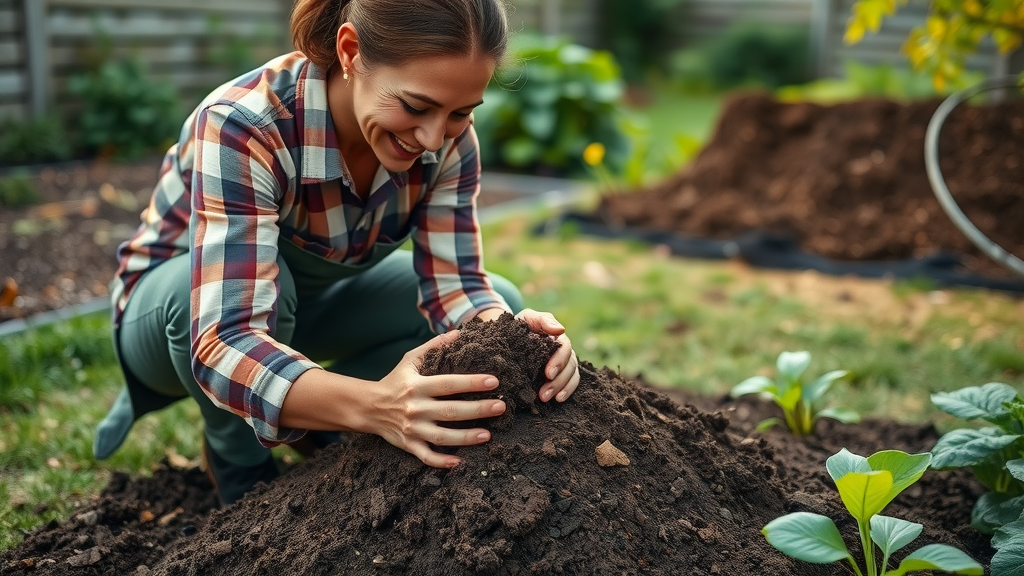
Composting and Mulching in Sustainable Gardens
Composting yard waste and kitchen scraps recycles valuable organic matter back into your garden. Well-composted material provides slow-release nutrients for plants, improves soil texture, and supports beneficial microbes, all while helping reduce landfill use and pollution.
Mulching your sustainable landscape with chips, leaves, or gravel conserves soil moisture, suppresses weeds, and insulates plant roots from temperature extremes. Both composting and mulching are low-cost, effective solutions to improve plant health and resilience in San Diego’s arid climate.
Innovative Sustainable Landscaping Ideas for San Diego Homes
Green Roofs, Living Walls, and Permeable Hardscapes
Innovative landscaping ideas like green roofs and living walls are gaining popularity as homeowners look for ways to maximize limited space and boost sustainability. A green roof—a living garden atop your home or garage—helps regulate building temperature, reduces runoff, and provides habitat for birds and insects. Living walls offer similar benefits while adding beauty and a space-saving way to grow native plants and edibles vertically.
Permeable hardscapes such as gravel, pavers, or decomposed granite allow rainwater to filter naturally into the soil rather than running off into storm drains. These features not only support water conservation but also create attractive, modern spaces that are easy to maintain and suited to San Diego’s climate and design aesthetic.
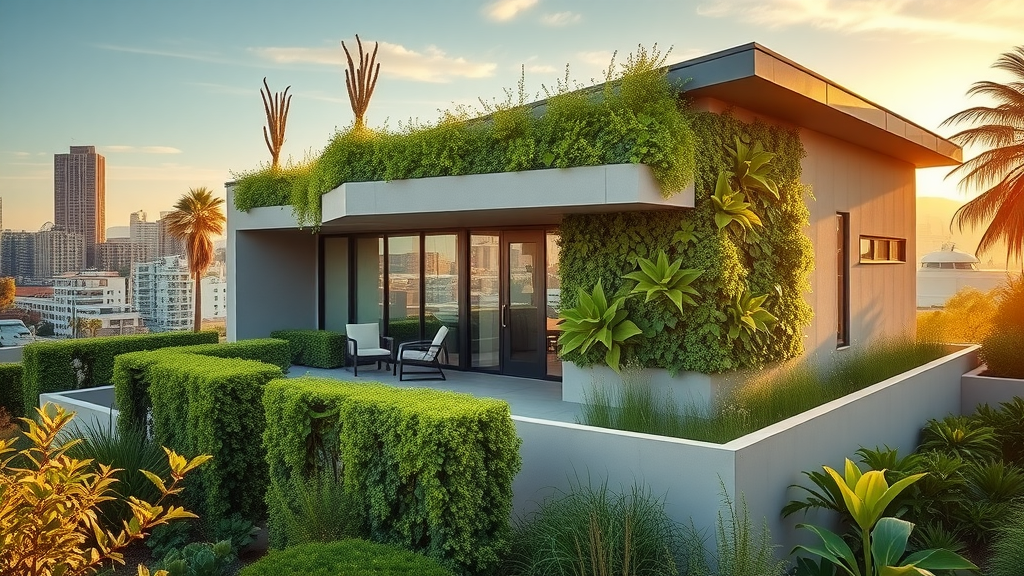
Low-Maintenance Landscaping Ideas Using Native Plants
For those seeking curb appeal with minimal effort, designing a sustainable landscape primarily with native plants is key. Native landscaping ideas include massing low-water shrubs for privacy, using perennial wildflowers for seasonal color, and framing outdoor living spaces with drought-tolerant grasses and ground cover.
These plantings require little supplemental water or care once established, resist local pests and diseases, and provide visual interest throughout the year. By focusing on plant communities that mirror natural habitats, homeowners can create low-maintenance, year-round sustainable gardens even in small urban plots.
Community Resources: Cooperative Extension and Local Expert Support
The University of California Cooperative Extension and other local organizations offer expert guidance and free workshops on sustainable landscaping practices. Extension specialists, master gardeners, and landscape architects can provide tailored advice on plant selection, soil management, and irrigation strategies specific to the San Diego region.
Engaging with these resources can help you avoid common mistakes, connect with vetted contractors, and even access rebates or incentives for sustainable site upgrades. The cooperative extension is an invaluable ally in your sustainable garden journey, empowering you to design a landscape that’s both beautiful and eco-friendly.
Sustainable Landscape Maintenance and Management
Scheduling and Best Practices for a Sustainable Landscape
A key part of sustainable landscaping is regular, mindful maintenance. Schedule yard work for cooler times of day to conserve water and reduce plant stress. Use sustainable practices like hand weeding, pruning for plant health, and seasonal top-dressing with compost. Avoid over-fertilizing, which can harm both your plants and local waterways.
Plan your work according to the San Diego climate—prepare the landscape before winter’s driest months with deep watering, mulching, and by checking drip systems for efficiency. Consistent, eco-friendly maintenance not only helps your yard withstand drought but also ensures long-term satisfaction and sustainability.
Managing Pests and Diseases Naturally
Integrated pest management (IPM) is crucial for maintaining a sustainable landscape without synthetic chemicals. Attract beneficial insects with pollinator and native plants, rotate crops in edible gardens, and use physical barriers or biocontrols when needed. Healthy soils and diverse plantings naturally suppress many common pests and diseases.
When intervention is necessary, opt for organic solutions such as neem oil, horticultural soaps, and biological controls. Regular monitoring and early action help maintain plant health, reduce disease outbreaks, and keep your landscape thriving with minimal chemical inputs.
People Also Ask: Sustainable Landscaping Practices
What are the sustainable practices in landscape design?
Sustainable landscaping practices in design include using native plants, efficient irrigation, soil health improvement, and minimizing chemical use to create thriving, low-impact landscapes.
What is the rule of 3 in landscaping?
The rule of 3 in landscaping refers to designing using groupings of three (or odd numbers) for plants and features, ensuring balanced visuals that follow principles of sustainable landscaping and curb appeal.
What is sustainable landscaping?
Sustainable landscaping is an approach that seeks to reduce negative environmental impacts through practices like water conservation, use of native plants, organic methods, and creating habitats for local wildlife.
What is sustainable landscape management?
Sustainable landscape management involves regular assessment and adaptive care using ecological practices to maintain soil, water, plants, and biodiversity over time.
Key Takeaways: Sustainable Landscaping Practices for San Diego Yards
- Sustainable landscaping practices conserve water and adapt to San Diego’s dry winters.
- Choosing native plants and sustainable garden designs lowers maintenance and improves yard resilience.
- Cooperative extension resources can boost your sustainable landscaping success.
Frequently Asked Questions: Sustainable Landscaping Practices
- How do sustainable landscaping practices improve property value? By reducing maintenance costs and water bills, improving curb appeal, and offering long-term resilience, sustainable landscaping enhances property value for homeowners in San Diego and similar climates.
- Are there incentives for installing sustainable landscapes in San Diego? Yes, many local agencies and water districts offer rebates for turf replacement, smart irrigation installation, and rain garden construction—check with your cooperative extension or local water authority for current programs.
- Can I retrofit my existing yard for sustainable landscaping? Absolutely—incremental upgrades like converting turf to native plants, adding mulch, or installing drip irrigation are effective and can be done over time for significant impact.
- What are the best ground cover options for a sustainable landscape? Top choices include California fescue, creeping thyme, yarrow, and sandstone sedge—all drought-resistant and suited to San Diego gardens.
Conclusion: Building Resilience with Sustainable Landscaping Practices
Embrace sustainable landscaping practices to safeguard your San Diego yard, reduce costs, and enrich your local environment. Ready to start? Consult a certifiedLandscape Contractorfor expert solutions.
This video provides expert guidance and visual examples of sustainable landscaping practices specifically tailored for San Diego’s climate, including native plant selection, water conservation methods, and creative design ideas for resilient yards.
Get hands-on instructions for creating a rain garden in your San Diego landscape—a must-see for water-wise gardeners and anyone looking to maximize sustainability and yard beauty through practical, proven methods.
Sources
- https://www.sandiego.gov/water/conservation – City of San Diego Water Conservation
- https://cesandiego.ucanr.edu/ – San Diego County Cooperative Extension
- https://californianativeplants.com/ – California Native Plant Society
- https://brecedalandscape.com – Breceda Landscape
- https://www.epa.gov/soakuptherain/soak-rain-rain-gardens – EPA: Rain Gardens
To further enhance your understanding of sustainable landscaping practices, consider exploring the following resources:
-
The article “Move over, green lawns. Drier, warmer climate boosts interest in low-water landscaping” discusses how homeowners are adopting xeriscaping to conserve water and support local biodiversity.
-
The California Water Efficiency Partnership’s guide on “Sustainable Landscaping” offers comprehensive guidelines on fostering living soils, conserving water, and selecting appropriate plant materials.
These resources provide valuable insights into implementing sustainable landscaping practices tailored to San Diego’s unique climate and environmental conditions.

